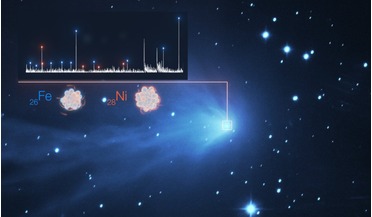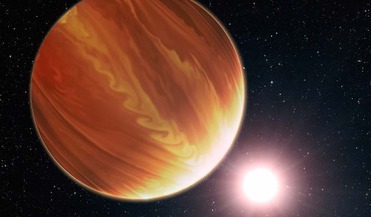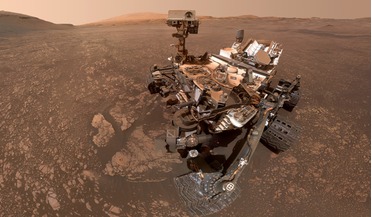 19 May 2021
Scientists unexpectedly find heavy metal vapour in comets throughout our Solar System, and beyond
19 May 2021
Scientists unexpectedly find heavy metal vapour in comets throughout our Solar System, and beyond
... the constituents of water – material left over from when the planets formed – such as carbon dioxide (CO2), carbon monoxide (CO), methane (CH4), and ammonia (NH3). Even when close to the Sun, these gases do not change much in ...
 June 2020
Titan’s evolving atmosphere
June 2020
Titan’s evolving atmosphere
...and processes therein leading to the formation of organics. The atmosphere also includes small amounts of exogenous carbon monoxide, carbon dioxide and water. The complex refractory organic compounds combine and aggregate in the atmosphere where they...
 January 2021
Taking out the trash in space
January 2021
Taking out the trash in space
... from the flight experiment was largely consistent with lab testing, the primary products being carbon dioxide and carbon monoxide. Trace compounds that were also produced are being researched and fully understood for future...
 26 April 2016
Sulphur chemistry could be the key to clouds on many exoplanets
26 April 2016
Sulphur chemistry could be the key to clouds on many exoplanets
... twice what it is at Earth today, or about 200 times what it is at Titan. As similar studies have suggested, carbon monoxide is expected to be abundant in its atmosphere, however this cannot be substantiated with current data. Global clouds of iron...
 13 November 2019
Curiosity uncovers oxygen mystery on Mars
13 November 2019
Curiosity uncovers oxygen mystery on Mars
... – SAM has deducted that Mar’s atmosphere is composed of: 95% by volume of carbon dioxide (CO2), 2.6% molecular nitrogen (N2), 1.9% argon (Ar), 0.16% molecular oxygen (O2), and 0.06% carbon monoxide (CO). SAM’s analysis also reveals how this thin and...
 20 January 2020
ESA facility begins producing oxygen out of simulated moon dust
20 January 2020
ESA facility begins producing oxygen out of simulated moon dust
... no toxic by-products. “At Metalysis, oxygen produced by the process is an unwanted by-product and is instead released as carbon dioxide and carbon monoxide, which means the reactors are not designed to withstand oxygen gas itself,” explains Lomax...